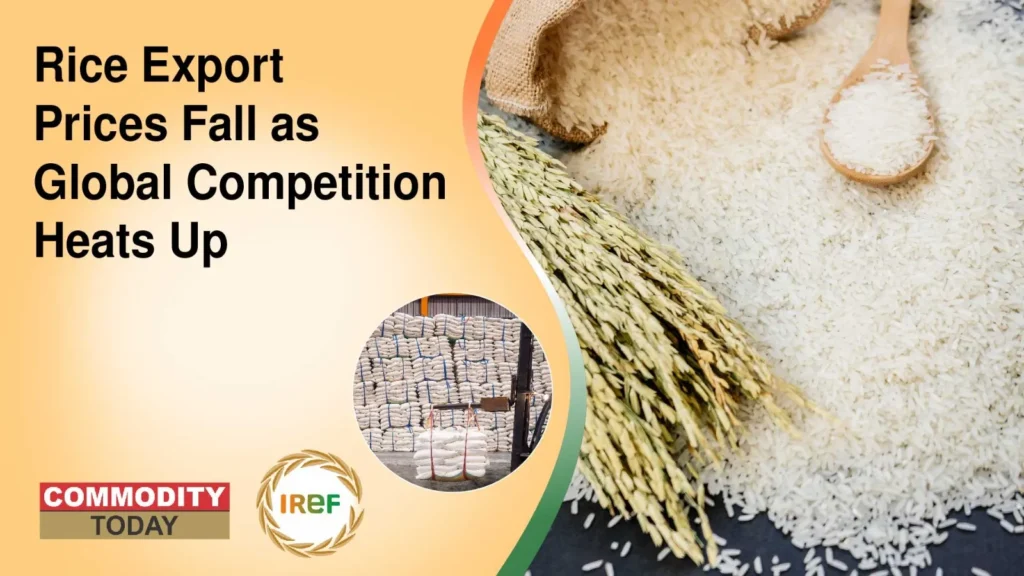Rice export prices across Asia have plunged to multi-year lows as major producers like Thailand, India, and Vietnam intensify their fight for international buyers. The sharp decline in export rates signals growing competition in the global rice market, with record harvests and shifting currency dynamics giving importers more bargaining power than ever before.
Asian Rice Export Prices Hit Multi-Year Lows
Thailand is also experiencing its lowest level since 2007; 5% broken white rice is now trading at just $340 per metric ton — its lowest level since 2007. A bumper harvest and a stronger Thai baht have made exports less appealing to overseas buyers.
In India, rice export prices have fallen in tandem. Parboiled rice now sells for $340–$345 per ton, its weakest level since 2016, while white rice is quoted between $360–$370 per ton. A weak Indian rupee has partially offset the decline, helping exporters stay competitive despite falling global demand. Whereas Vietnam’s rice export prices remain relatively firmer at $440–$465 per ton, but the country’s September exports dropped 41% year-on-year, as major importers such as the Philippines reduced purchases. Notably, a recent deal by Bangladesh to import 50,000 tons of Indian rice at $359.77 per ton underscores the ongoing oversupply in the global rice market, where buyers are dictating prices and exporters are struggling to maintain profitability.
Why It Matters for the Global Rice Market?
Surplus production in leading exporting countries is intensifying price competition and squeezing profit margins for Asian rice traders. As rice export prices slide, exporters are forced to cut deals to safeguard their market share, even at the cost of lower earnings. For investors, this translates to volatility in agricultural commodity markets, particularly for stocks tied to agribusiness, food exports, and logistics. For rice importing nations, however, falling rice export prices offer relief from food inflation, easing pressure on domestic prices — at least temporarily.
The Bigger Picture: A Buyer’s Market Emerges
The ongoing decline in rice export prices is shifting market power toward importing countries, reversing years of exporter dominance. This new buyer’s market is challenging traditional trade dynamics and forcing exporters in Thailand, India, and Vietnam to rethink strategies around pricing, quality, and policy compliance. Currency fluctuations, unpredictable trade restrictions, and changing global food demand continue to add uncertainty to an already fragile market. Analysts warn that without careful management, the current price war in the rice export sector could undermine long-term profitability for Asian producers.



